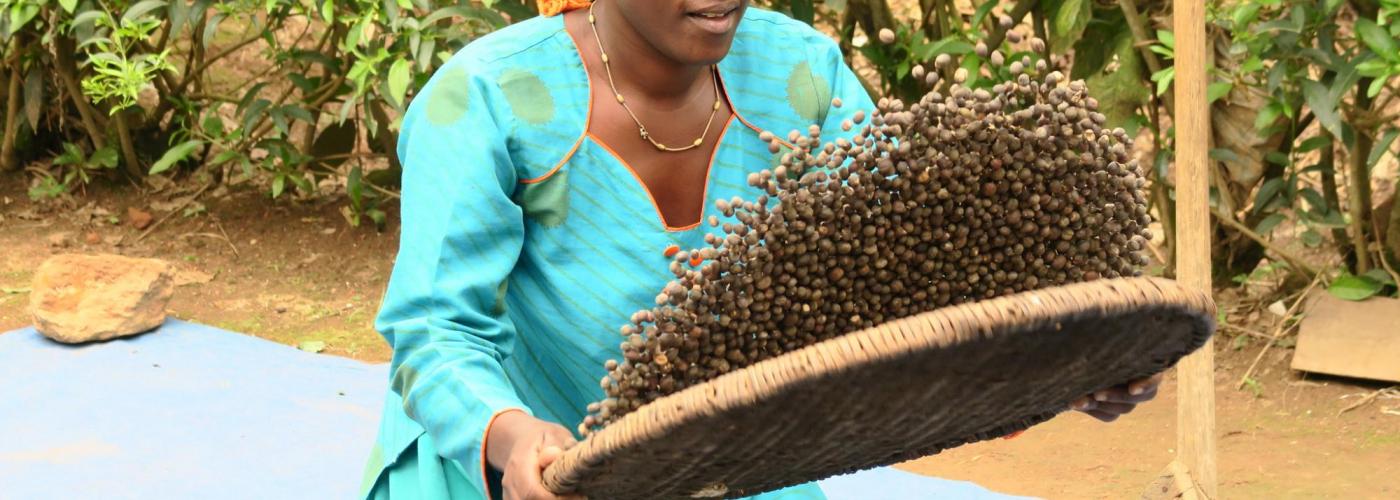Spotlight on SeedCLIR: Incorporating a Maturity Model Approach to Seed Sector Development
Image

This month, Marketlinks is exploring the enabling environment and market systems of the seed sector.
This is the fifth installment of the Feed the Future Enabling Environment for Food Security project’s analytical tools series originally posted to Agrilinks. Check out the introductory post, the AgBEE tool profile, the AgCLIR methodology profile and the VcCLIR tool for more information on related tools.
The development of a strong seed industry capable of meeting farmer demand for new varieties is fundamental to USAID and the Global Food Security Strategy goals of improving productivity and scaling agricultural technologies.
The Seed Commercial, Legal and Institutional Reform (SeedCLIR) tool is well-placed to aid these dual goals. SeedCLIR is a comparative tool that measures progress in seed system development in a single country over time or to benchmark the enabling environment for seed between countries within or across geographic regions. SeedCLIR maps the performance and maturity of the agricultural business enabling environment (AgBEE) along one of five stages of seed sector development, giving Missions and policymakers an analysis to guide a reform agenda and measure the progress of those reform efforts over time.
SeedCLIR Nuts and Bolts
Despite years of policymakers and donors alike focusing on increasing farmers’ access to and use of improved seed varieties, the vast majority of farmers in developing countries still do not use these essential inputs. A poor business enabling environment for seed affects the supply of improved seed. Restrictive policies, laws, and regulations inhibit the development of a private seed industry capable of meeting market demand. In collaboration with the Seed Science Center at Iowa State University, the USAID Enabling Agricultural Trade (EAT) project examined AgBEE obstacles to seed sector expansion in its policy brief, "Building an Enabling Environment for Seed Sector Growth."
As a result of the positive response to the brief, USAID’s EAT project led to the development of SeedCLIR. The data-driven tool was designed to enable countries to assess critical seed sector weaknesses, undertake targeted seed sector reforms and effectively gauge the performance of reform activities over time.
SeedCLIR is grounded in the theory that in order to build an efficient seed system, the legal and institutional components of that system must be developed in concert. To that end, the SeedCLIR methodology utilizes a maturity model approach, which identifies the comparative maturity level of each component of the seed system and enables donors and policymakers to concentrate their efforts in the areas of greatest impact. SeedCLIR also provides an overview of the seed value chain, identifying the key players and examining the performance of the system from a variety of development through seed market demand.
SeedCLIR Tanzania Case Study
The SeedCLIR methodology was successfully piloted in April and May 2013 in Tanzania during a period of heightened donor and government attention on improving seed policy in Tanzania. The Tanzanian government was in the process of approving a new seed strategy, and the newly completed New Alliance Cooperation Framework for Tanzania contained a number of seed sector development goals. In addition, USAID was in conversation with the Alliance for a Green Revolution in Africa (AGRA) to scale up the AGRA program for Africa’s Seed System in Tanzania, and the government had just wrapped up a six-week policy workshop called “Big Results Now” that included specific recommendations for seed sector improvements. The SeedCLIR Tanzania diagnostic was thus well-timed to capitalize on the momentum and political will for reform.
The pilot produced lessons learned that refined the methodology and approach, and three cross-cutting themes emerged from the analysis. First, the government’s participation in seed supply, through the parastatal Agricultural Seed Agency, created a bottleneck in the supply chain and dampened private sector development by operating commercial activities in direct competition with private seed companies. Second, the Tanzanian Official Seed Certification Institute lacked sufficient human and financial resources to adequately control the quality of seed in the market, thus resulting in a high prevalence of fake seed that undermined market demand for improved seed. Finally, despite much public discussion of the challenges within the seed sector and public commitment to private seed sector development, concrete political action to implement policy reforms remained limited.
Overall, according to the SeedCLIR maturity model, the team assessed Tanzania to be at the expansive stage of seed system development, which is also the most expensive stage within the model in terms of government investment. The SeedCLIR report recommended urgent reforms to free up resources currently spent on seed production, marketing, and subsidies to support institutional capacity building and research for crops with low commercial potential.
The SeedCLIR Tanzania report informed ongoing discussions between USAID and the government of Tanzania in the context of the New Alliance commitments and efforts to scale seed usage under AGRA. The report and methodology also generated much discussion within USAID/Washington and spawned interest from Missions in other countries in Central America for additional SeedCLIR assessments.
To learn more about SeedCLIR, check out the complete SeedCLIR Tanzania Report and contact the Feed the Future Enabling Environment for Food Security project for additional information.
Listen to our webinar with Agrilinks and EEFS project on the SEEDCLIR study in eastern DRC recorded on February 6th, 2020.

